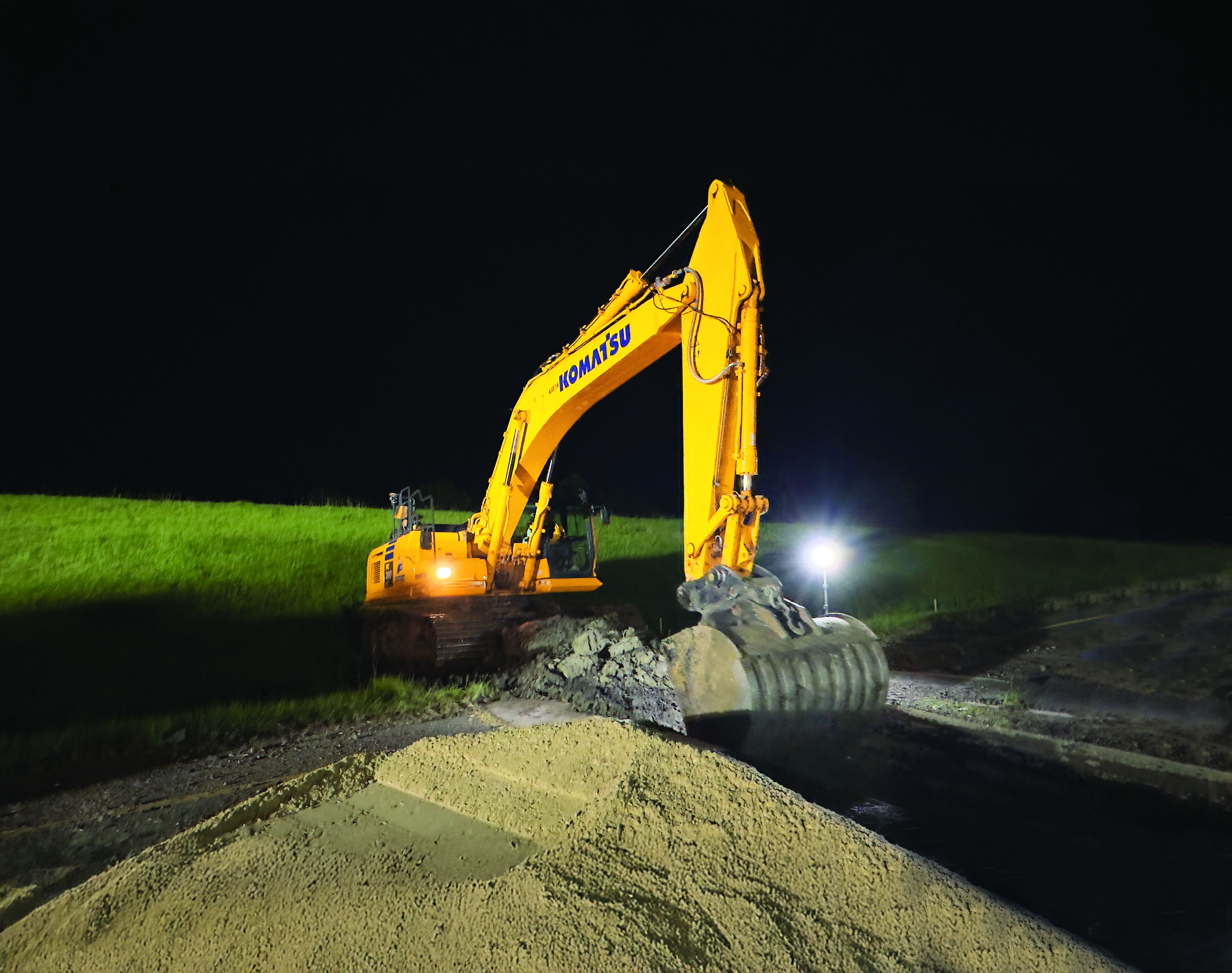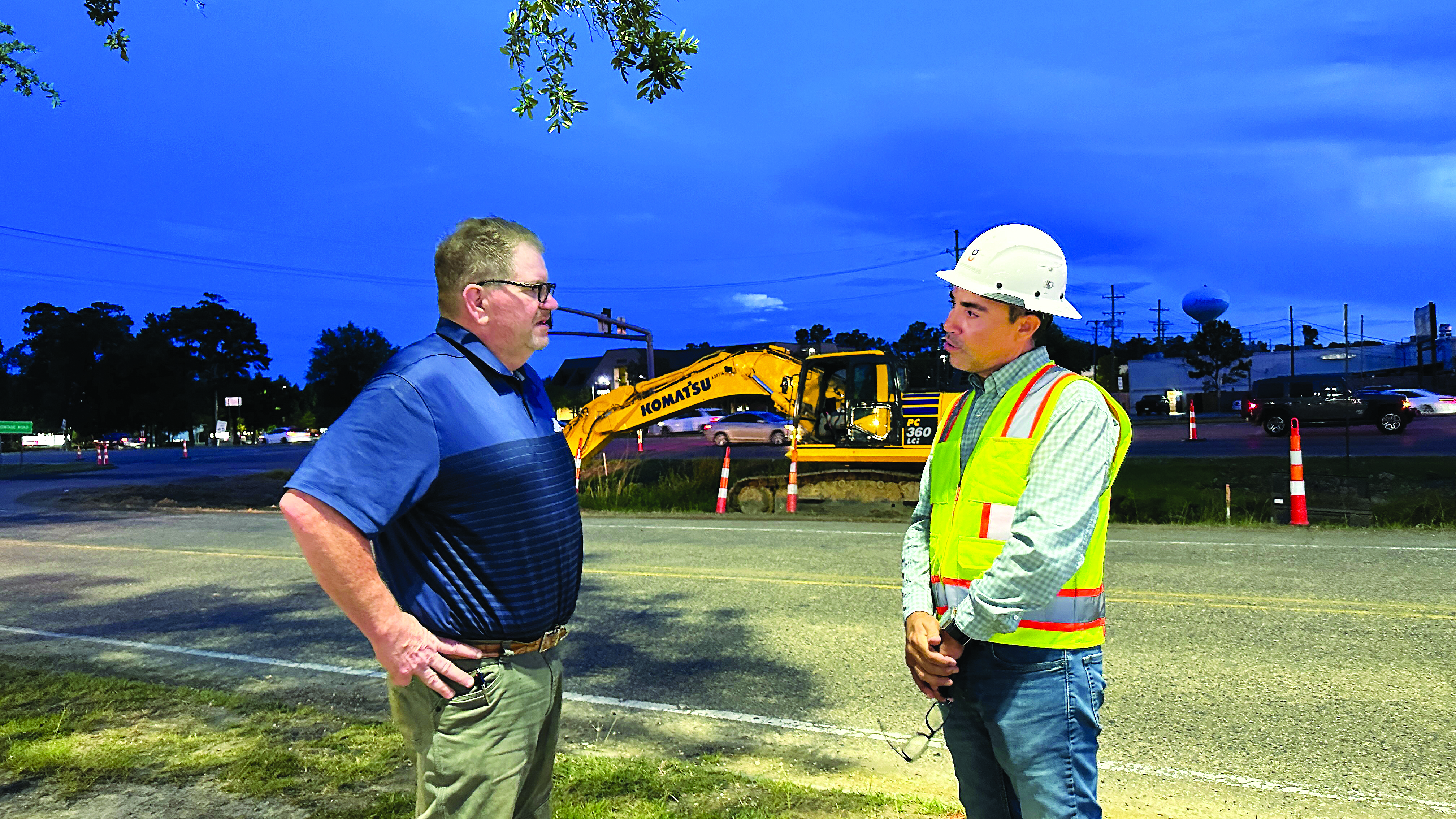
8 minute read
Gascot Construction LLC
Living the American Dream
Move to Louisiana leads Rafael Gascot to form his own business that helps general contractors complete state and municipal project deadlines
Eight years ago, Rafael Gascot moved with his wife and children to Louisiana in search of a new opportunity. The native of Puerto Rico had spent about 15 years in his previous home country working in his family’s business, which mainly focused on residential subdivision sitework for private developers.

“The market went down after the mortgage crisis, so I decided to look elsewhere,” recalled Gascot. “There was an opportunity here, so we came and checked it out and liked what we saw. I took the job as a superintendent with another company and eventually moved into a superintendent’s role in its industrial sector. That gave me my first taste of state contracting work. I loved it and saw a lot of growth potential.”
Gascot also learned about the benefits for minority-owned businesses on state contracting projects, which spurred him to start his own company. In 2017, he founded Covington-based Gascot Construction LLC, which is an 8(a) and Disadvantaged Business Enterprise-certified firm that focuses on heavy civil construction and utilities throughout Louisiana.
Gascot Construction offers a wide variety of services to general contractors such as clearing and grubbing; earthmoving; demolition; box culvert, water, sanitary sewer and fire system installation; and drainage system and pump station construction. The company also offers full site packages.
“Our certification benefits our customers by helping them meet the goal of a certain percentage of work being performed by a DBE,” explained Gascot. “We continue to work with some of the biggest companies in Louisiana, and they have kept us so busy that we haven’t felt the need to go beyond subcontracting at this point. The general contractors reach out to us every month for bids on state lettings. That’s a source of pride for us because it shows we are doing good work.”

Chasing bigger projects
Successful completion of numerous projects for its clients has fueled growth for Gascot Construction, especially the past two years. The firm has nearly tripled in size during that time, going from a dozen employees to 35 currently. They are split among the seven or eight jobs the business has going at any one time.
A recent project in the Covington/Mandeville area saw a Gascot Construction crew perform subsurface drainage and earthwork as part of improvements to existing on/off ramps and frontage roads on Route 190. The roughly $2 million contract involved removing and replacing existing drainage pipe and structures with approximately 1,300 feet of new line, as well as excavating about 40,000 cubic yards of dirt for about a half-mile of embankment on the ramps.
“We consider that a mid-range project,” commented Gascot. “Our average size is around $4 million. It’s all dependent on the scope of work that we are contracted for. We have done some jobs that are 5 or 6 miles long with a lot of drainage structures. We are chasing those bigger jobs with larger dollar amounts.”

One of Gascot Construction’s larger projects included work on a new four-lane highway in St. James Parish and Ascension Parish that involved removing the existing structures and installing drainage, box culverts, structural concrete and riprap. Gascot Construction provided a similar scope on another four-lane highway project on Louisiana 3241 in St. Tammany Parish that included embankment.
On the Comite River diversion project in East Baton Rouge Parish, Gascot Construction crews installed drainage structures and R-90 riprap.
Komatsu checks all the boxes
As Gascot Construction’s projects grew in size and scope, so did its equipment fleet. Long before Gascot made the move to Louisiana, he was pro-Komatsu. Upon starting his own business, Gascot contacted Waukesha-Pearce Industries LLC Sales Representative David Bell to acquire a PC138USLC-11 excavator. Gascot has since added several more Komatsu excavators, including a PC290LC-11, a PC170LC-11, as well as PC290LCi-11 and PC360LCi-11 Intelligent Machine Control (IMC) models.
“We rely heavily on excavators, and Komatsu gives us the best performance,” said Gascot. “We equipped the PC138 with a rotating wrist to allow for digging straight on or at an angle, and it’s been great. Because it doesn’t have the standard counterweight, we can fit it into tight areas. It’s ideal for putting riprap around piles on abutment work.”

Gascot continued, “We added the long-reach PC290LC-11 recently for riprap installation on the Comite River project because that was what the job required. We also use it for box culvert installation. It’s great for canal work where you can’t really get up close. We can reach out 60 feet with it.”
Gascot Construction digs footings and lifts concrete buckets into place with the PC170LC-11 and uses the IMC excavators to efficiently dig to grade with limited or no staking.
“The job is right there on the screen in front of the operator, and once they hit target depth, the machine won’t let them dig any deeper,” said Gascot. “You always know where you are in relation to finish elevation. It eliminates uncertainty. That made us pursue the IMC models. I would say with those excavators, we are 25% to 30% more efficient. They save time and significantly reduce or eliminate rework. An additional advantage is they have the power to lift and set pipe and the heavy culvert boxes we deal with.”

Additionally, Gascot Construction uses a GPS-equipped D39PX-24 dozer to push and grade in open spaces and tight areas, and operators move material and pipe as well as backfill with WA320 and WA270 wheel loaders.
“I want equipment that’s reliable, agile, has power and gives me a good five or six years of service,” stated Gascot. “Komatsu checks all the boxes. My first piece was a PC220 I bought in 2004 while I was still in Puerto Rico, and I kept adding. I fell in love with Komatsu. They gave me no problems, and even with years on them, they were productive. That experience made it easy to go with Komatsu when I came to Louisiana.”
Gascot added, “David and WPI have been huge difference-makers for my business. They make things happen and are agile in getting us what we need in both equipment and service. For instance, they helped equip the wheel loaders with flotation tires, so we could work in the soggy soils and unstable areas that are frequent in this area. WPI takes care of service through Komatsu Care. It’s been great working with David and everyone else we have dealt with at WPI.”

Finding the balance
Gascot is still navigating where he wants his company to be. On one hand, he wants to continue growing as rapidly as possible. On the other, he doesn’t want to go too fast and jeopardize the ability to provide quality work.
“It’s a fine balance,” Gascot emphasized. “Growth came fast, and we can’t complain about the spot we’re in, but I think everything takes time and experience. I have to remind myself that it’s better to do two jobs perfectly than do four and have them not be great. I want the company to be healthy for everybody, so the employees are successful and can take care of their families, and we can best serve customers.”
He’s also looking to expand into other markets, if it makes sense to do so.
“I think the next logical step would be getting into the federal market,” said Gascot. “We are trying not to have all of our eggs in one basket. It may be possible to look at expanding our territory as well. We are certified in Texas, Mississippi and Florida, and we get a lot of requests for work there, but there is so much work here that we haven’t pursued that much. At this point, we’re booked out the rest of the year right here.” ■
*The opinions expressed here are from the end user as quoted. The results described herein are those of these end users under certain conditions. Individual results may vary.



